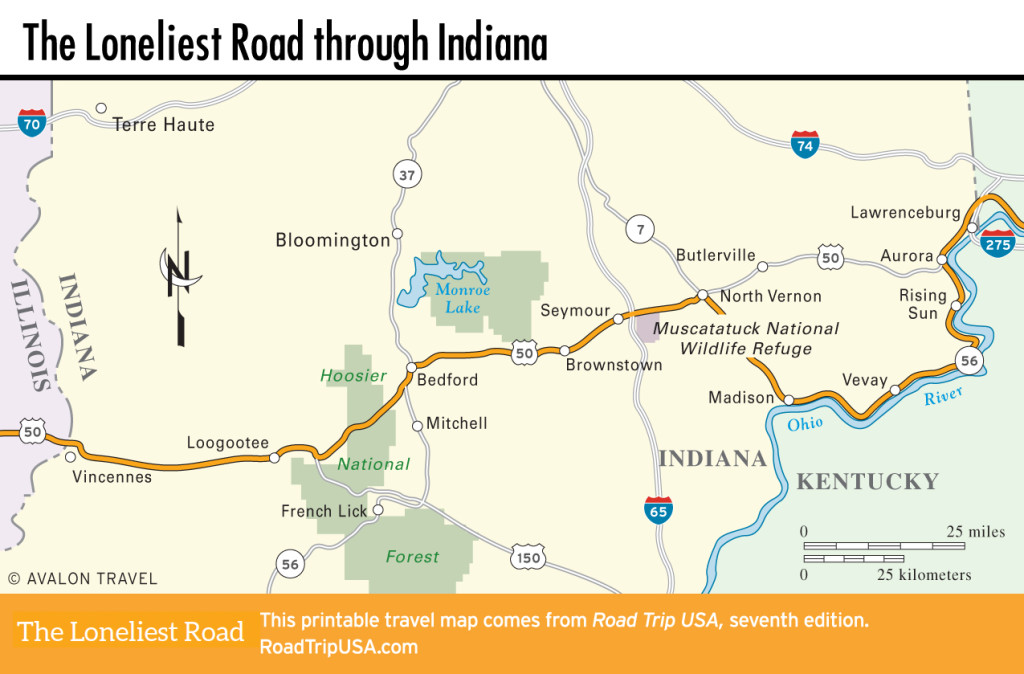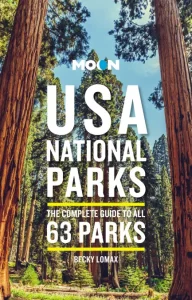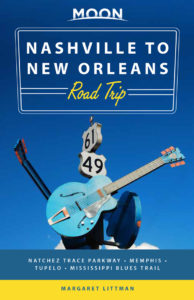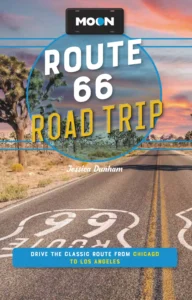Indiana
The Loneliest Road through Indiana
From the Wabash River at its western end to the Ohio River in the east, the 170 mi (275 km) of southern Indiana that lie between present an immensely varied landscape. The hilly eastern sections are surprisingly rugged, though the central and western reaches are comparatively flat and largely agricultural.
Besides numerous well-preserved historic Ohio River towns like Madison and Aurora, there are a number of unlovely industrial sections, especially around Bedford and the famous limestone quarries in the central parts of the state.

Vincennes
First settled by the French in 1732, and intensely fought over during the Revolutionary War, Vincennes (pop. 17,171) remained a lawless frontier until 1803, when it was named the territorial capital. A handful of early buildings, including a bank, a church, and a newspaper office, have been restored at 1st and Harrison Streets in the historic downtown area. Nearby, overlooking the Wabash River, the George Rogers Clark National Historical Park (free) is a classical dome honoring Revolutionary War general George Rogers Clark, who led local militiamen in the capture of Vincennes from the British in 1779. (George Rogers Clark was the older brother of William Clark, of Lewis and Clark fame.)
The monument, built as a WPA project during the Great Depression, wouldn’t look out of place in DC, but the rest of Vincennes is decidedly down-to-earth, with grain elevators, five-and-dime stores, and cafés along the busy railroad tracks.
The area around Vincennes is flat farming country, notable for its large Amish communities (and numerous roadside “Amish Kountry Korner” stores and cafés), especially around Loogootee, 37 mi (60 km) east of Vincennes.
Detour: French Lick and Mitchell
Between Vincennes and Bedford, US-50 winds its way through the hilly groves of the Hoosier National Forest. A worthwhile detour heads south through the hometowns of two of Indiana’s best-known sons. The first of these, on Hwy-56 just south of US-150, is French Lick (pop. 1,771), where 1980s Boston Celtics basketball star Larry Bird, who famously called himself “The Hick from French Lick,” learned to play. A century ago the surrounding area was a popular vacation resort, as thousands of Midwesterners (including Al Capone and other Chicago mobsters) came here to stay and play. After many years of neglect, the resorts have been reborn as part of the inevitable casino complex but still retain oodles of historic character. The fabulous West Baden Springs Hotel closed decades ago but was fully restored and reopened in 2007; it is now operated as part of the opulent French Lick Resort (812/936-9360, $254 and up), where you can take the mineral-rich waters that still flow from local Pluto Springs.
The whole story of regional development and personality is conveyed inside the French Lick West Baden Museum (469 S. Maple St., 812/936-3592, $8), which also displays a 1,110-sq-ft (103-sq-m) diorama of circus tents, elephants, and a carnival midway dating from the early 1900s, when West Baden was home to the nationally acclaimed Hagenbeck-Wallace Circus. French Lick also celebrates its favorite son with a Bird-themed (and Bird-owned!) sports bar called 33 Brick Street (480 Maple St., 812/936-3370).
The other famous southern Indiana hometown, Mitchell, is about 11 mi (17.7 km) south of Bedford and was the boyhood home of astronaut Virgil “Gus” Grissom, who captained Mercury and Gemini space flights before dying in the Apollo 1 disaster. There’s an impressive memorial—a 44-ft-high (13-m) limestone statue of a Redstone rocket—to Grissom south of Main Street on 6th Street, next to the police station.
















